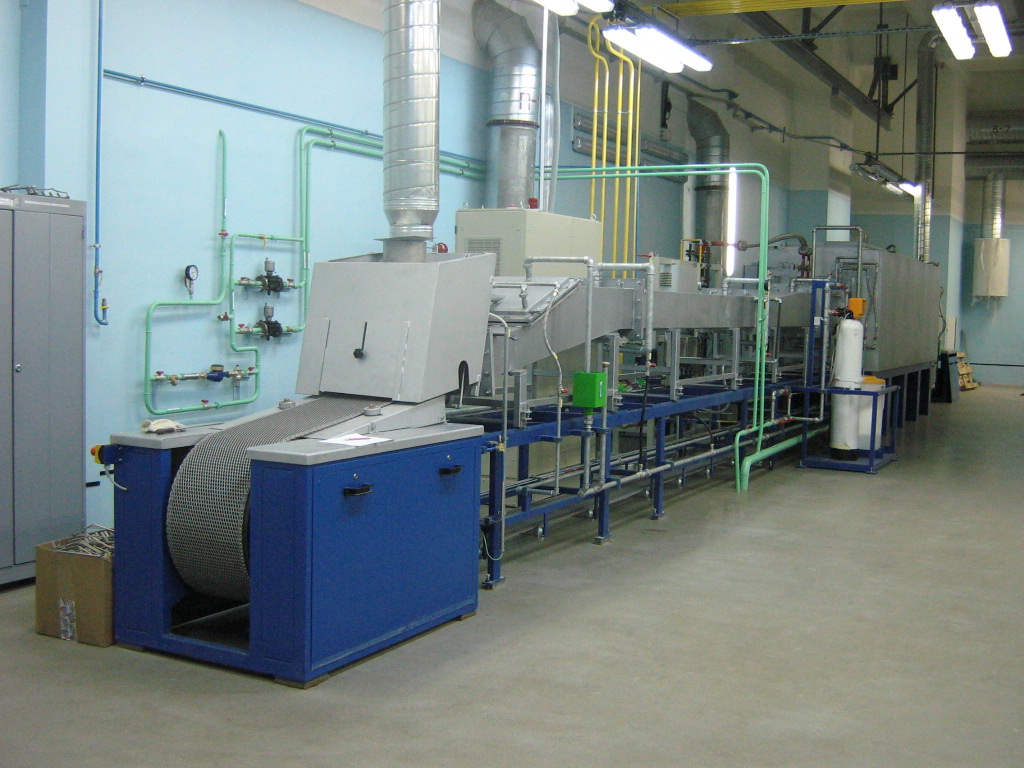Tubular armoured resistors produced thanks to solubilization furnaces consist of an outer metal tube (austenitic stainless steel, Inconel, incoloy, copper), inside which the resistive spiral made of nickel-chrome or equivalent material is located. Between the spiral and the outer tube, powdered magnesium is introduced and, at high temperature, sinters, representing the dielectric compared to the outer tube.
At the same time, above the temperature of 1000°C for austenitic stainless-steel resistors and a little higher temperature for nickel superalloys, inside the furnaces the annealing process of the outer tube takes place, and this allows the bending of the element in different shapes.
The annealing process of stainless-steel armoured resistors inside Sabe’s furnaces can take place in “black” if a compact superficial oxidation resistant to aggressive agents and fats (stoves, heaters etc.) is required, or in “white” for water applications (washing machines, kettles etc.). The superficial oxidation is obtained using a protective atmosphere made of endothermic or exothermic gas, while the white surface requires nitrogen and hydrogen. The annealing process usually takes place inside continuous furnaces with metal conveyor belt.
Contact Sabe’s experts to receive more information about our solubilization furnaces for tubular armoured resistors.




